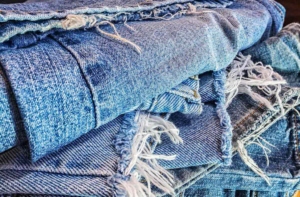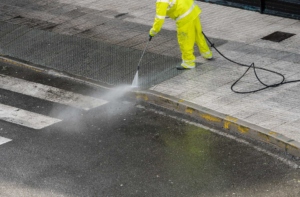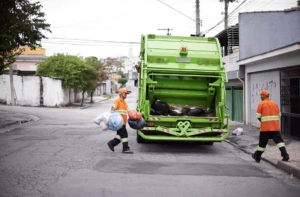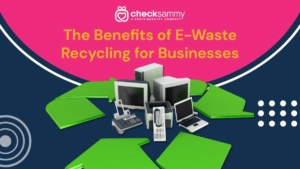A Sustainable Approach to Textile Waste
Textile waste has become a pressing concern worldwide in recent years, with around 92 million metric tons of discarded clothing and fabrics ending up in landfills or incinerators every year. This large volume of discarded textiles not only exacerbates environmental pollution, but also misses valuable opportunities for upcycling and recycling that could help minimize the textile industry’s impact on the planet.
Today, we’re diving into the urgent issue of textile waste and exploring sustainable solutions that can make a difference. We’ll provide you with insights and inspiration to lead your company toward more sustainable operations.
What Is Textile Waste?
Textile waste refers to discarded or unused material produced during the lifecycle of textiles, from the production stage to post-consumer waste. This includes clothing, accessories, bedding, upholstery, fabric scraps, towels, curtains, and other linens. Textile waste is created in various ways, through off cutting and trimming during the production process, excess inventory from retailers, and used or damaged items that consumers discard. The two main sources of textile waste are:
- Pre-consumer waste: Any waste generated during the manufacturing process, like fibers, yarns, and fabric scraps. This type of waste is typically caused by production inefficiencies or quality control issues that lead to rejected materials before they reach the point of retail.
- Post-consumer waste: Any waste generated after a textile product has been used and is no longer wanted or needed. This includes clothing that’s discarded due to wear and tear, changes in fashion trends, or personal preferences; as well as unsold or excess clothing and accessories discarded by retailers. The EPA found that textile waste occupies nearly 5% of all landfill space, and the average consumer in the U.S. and U.K. combined wastes 66 pounds of textiles every year.
Although most people think of post-consumer waste when speaking of textile waste, it’s important to also be aware of waste generated during manufacturing and have a plan in place for minimizing such waste as well as sustainable disposal of excess material.
Combatting Textile Waste with Textile Recycling and Upcycling
Textile recycling encompasses the process of repurposing or transforming used textiles into new materials or products, thereby reducing waste and promoting a more circular economy. Textile upcycling, in contrast, involves returning textile items that still have some life left in them to circulation by donating them to thrift stores or charitable organizations. For example, a lightly used dress or jacket can be donated to a resale organization like Goodwill instead of being subjected to the recycling process.
When textile items have exhausted their lifespan, textile recycling is the most sustainable option for disposal. Textile recycling can be divided into two main categories:
- Mechanical recycling: A recycling facility physically breaks down used textiles into fibers, which are then spun into new yarns and fabrics. The process begins with sorting items by material type and color, followed by shredding, carding, and spinning to create new yarns. This is a commonly used method, particularly for natural fibers, but it can sometimes result in lower textile quality due to the shortening of fibers during the recycling process.
- Chemical recycling: A recycling facility breaks down textiles at a molecular level, using chemical processes to separate and extract polymers or fibers from the waste materials. The extracted materials are then reassembled to create high-quality yarns and fabrics that are comparable to the original textile quality. Chemical recycling is often used with synthetic materials to help preserve textile quality.
Established textile recycling vendors make the process as simple as possible for organizations, and will collect all forms of textile waste from your facility, handling sorting and diversion for you. That’s where CheckSammy comes in.
The CheckSammy Drop Program: One-Stop Textile Recycling
For retailers and businesses with heavy textile use or production, CheckSammy has developed a one-step program to simplify the textile recycling process. Our “Drop” textile recycling program streamlines textile waste management for clothing retailers, manufacturers, multi-family apartment communities, and other textile-heavy businesses through Drop Bags or Bins placed onsite, with the option to arrange single or recurring pick-ups. Our haulers pick up the bags or bins and consolidate the gathered materials, directing them towards a more sustainable and quantifiable outcome.
By partnering with CheckSammy, you can benefit the local economy since all recycled goods, including textiles, are kept onshore, and we strive to use recycling vendors in your immediate geographic location whenever possible. Best of all, the Drop program offers comprehensive reporting and analytics that can be leveraged to boost Environmental, Social, and Governance (ESG) scores and drive positive change.
Positive Change: Textile Recycling with the Teddy Bear Project
Jeans manufacturing is an incredibly resource-intensive process, with one pair of jeans requiring around 1,000 gallons of water to produce. CheckSammy recently partnered with the nonprofit organization, Red Ridge, NC to divert more than 20,000 pairs of jeans from landfills, and turn them into beautiful, handmade teddy bears. By creating a new use for the jean material, we were able to maximize the value of the water originally used in their production, preventing it from being squandered.
This exciting initiative achieved multiple goals: diverting textile waste from landfills, substituting new material with recycled denim to produce the teddy bears, and conserving hundreds of thousands of gallons of water. As is the case with textile recycling and upcycling, we were able to breathe new life into old jeans by turning them into teddy bears that will bring joy to the children who receive them. It was a win, win, win.
How to Implement Textile Recycling Solutions
Getting started with textile recycling and upcycling for your organization is as simple as a single phone call. Contact us today to get started with CheckSammy’s drop program and start handling textile waste more sustainably.
See Our Services
Create a custom solution to meet your waste and sustainability goals. Contact us today!
Continue reading
Dive deeper into the CheckSammy Blog by reading one of our posts below
Feeling the Pain of Higher Resident Turnover? Apartment Junk Removal Can Help
If you’re a property manager, you’ve probably had a significant increase in tenant turnover over the last couple of years. So it’s no wonder apartment junk removal may be top of mind for you right now. There are several reasons for this shift. For one, the housing market is on fire right now. In 2020 […]
Read MoreSetting Up a Community E-waste Recycling Program
E-waste is the fastest-growing municipal waste stream according to the EPA, yet e-waste recycling isn’t keeping pace. In fact, only 12.5% of all e-waste is recycled, reports the EPA. Starting a community e-waste recycling program is a terrific way to ensure hazardous e-waste, like lithium-ion batteries, doesn’t end up in your community’s landfill. Creating an […]
Read MoreWaste Management’s Role in the Circular Economy
Establishing a waste management program for your business or community is one of the best ways you can contribute to the circular economy. Here’s everything you need to know about waste management’s role in the circular economy (and how to get involved). What Is the Circular Economy? Our current economic model is all about taking […]
Read More5 Reasons to Consider a Textile Recycling Program for Your Organization
Americans sent more than 17 million tons of textiles to landfills in 2018, a volume that is only increasing every year, reports the Environmental Protection Agency. When you think about the fact that it can take over 200 years for textiles to decompose, it’s easy to grasp how large textile waste’s contribution is to the […]
Read More8 Benefits of Environmentally Friendly Power Washing Services
If you’re into maintaining the curb appeal of your business or home, then you’ve probably heard of pressure washing. Pressure cleaning involves using high-pressure water spray to remove grime, mold, dust, paint, mud, and other junk from objects or surfaces. Many people worry that pressure washing isn’t good for the environment, but this couldn’t be […]
Read MoreWhy Our Customers Love Our Full-Service Junk Removal
If you’re looking for full-service junk removal services, you’ve come to the right place. CheckSammy is a one-stop shop for all your junk removal and sustainability needs. From our affordability, simplicity, and unrivaled turnaround times to our innovative sustainability solutions and patented technology and data, it’s clear why some of North America’s biggest companies choose […]
Read MoreTips for a Stress-Free Move From An Eco-Friendly Junk Removal Company
What does an eco-friendly junk removal company know about moving? Quite a lot, actually. Moving can be an especially chaotic time. You have to pack everything up, get rid of unwanted items, clean your property, load everything up, and move your things to your new location. That doesn’t even include the unpacking and resettling period. […]
Read MoreCollege Junk Removal Tips for Student Move-In Day
As the new school year gears up, colleges across the country are looking for ways to clean up their campuses before the new year begins, and many of them want to do so sustainably. College junk removal isn’t easy, though, especially around move-in week—and when trying to do so sustainably. As students move in and […]
Read More8 Items Hospitality Businesses May Not Know They Can Recycle
One hotel guest produces 2.5 pounds of trash every single day. Just a single hotel room produces around one cubic yard of waste each month, which totals 200 gallons of waste per room every month. Most of this waste goes straight to the landfill, even though research shows that up to 60% of it is […]
Read More












